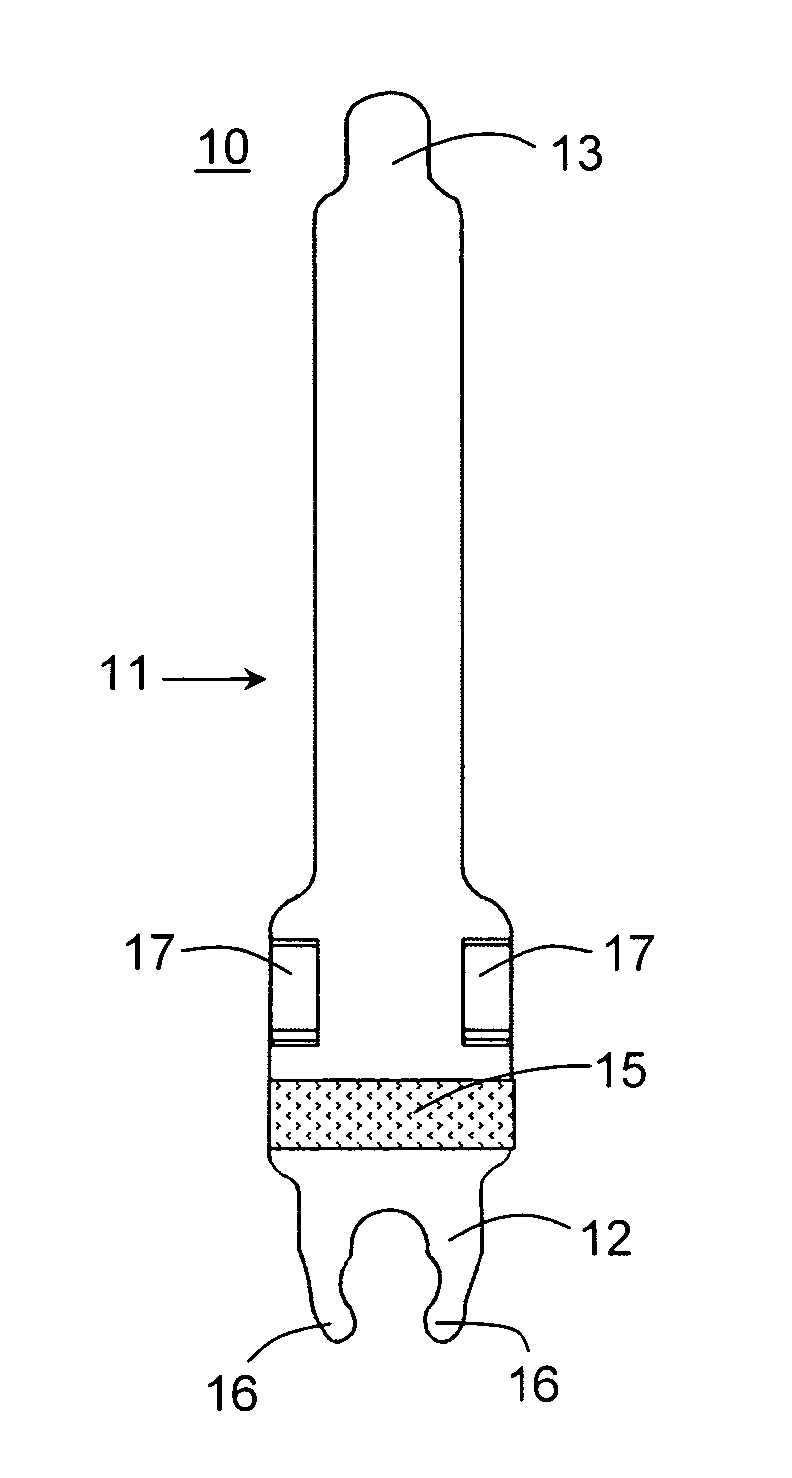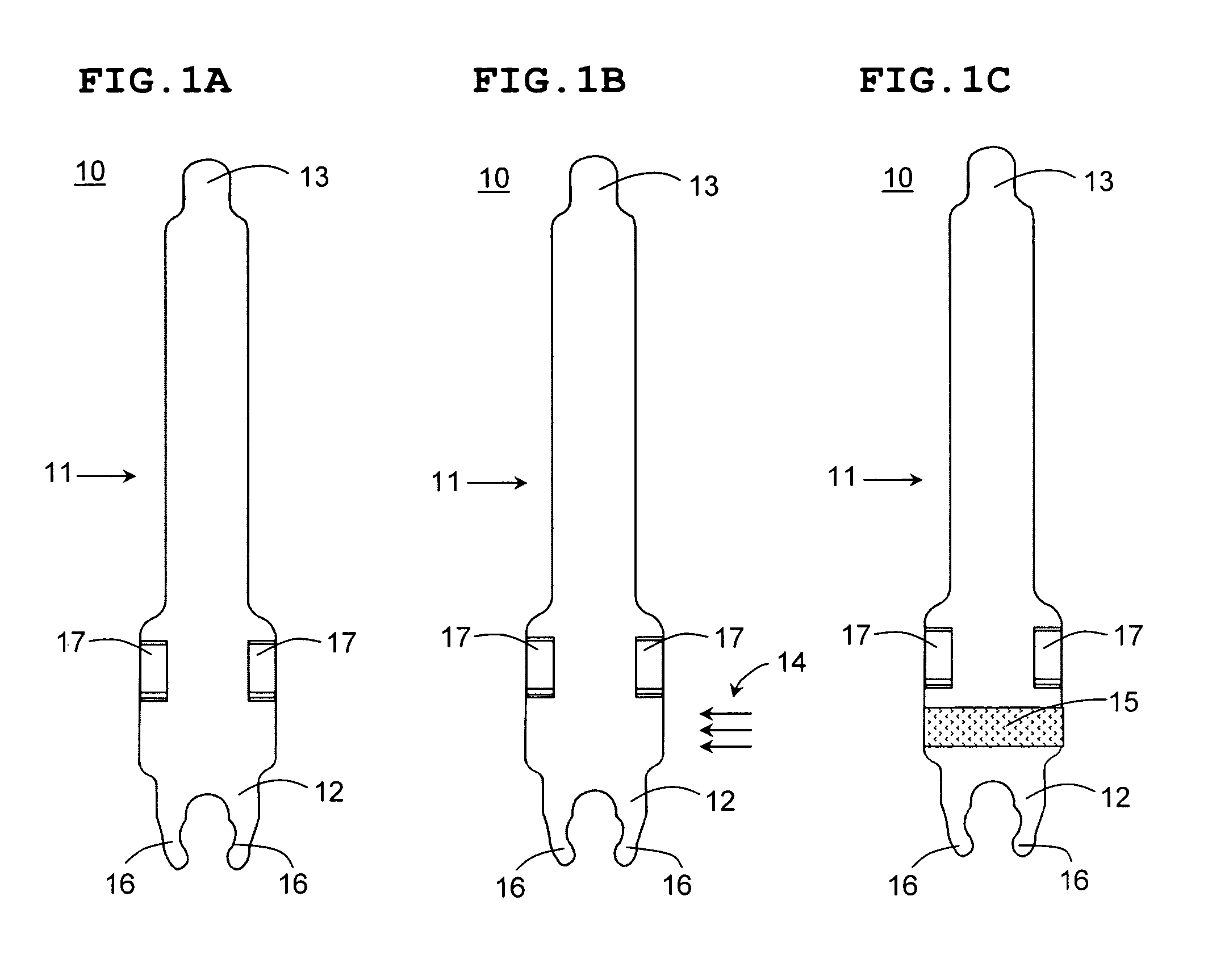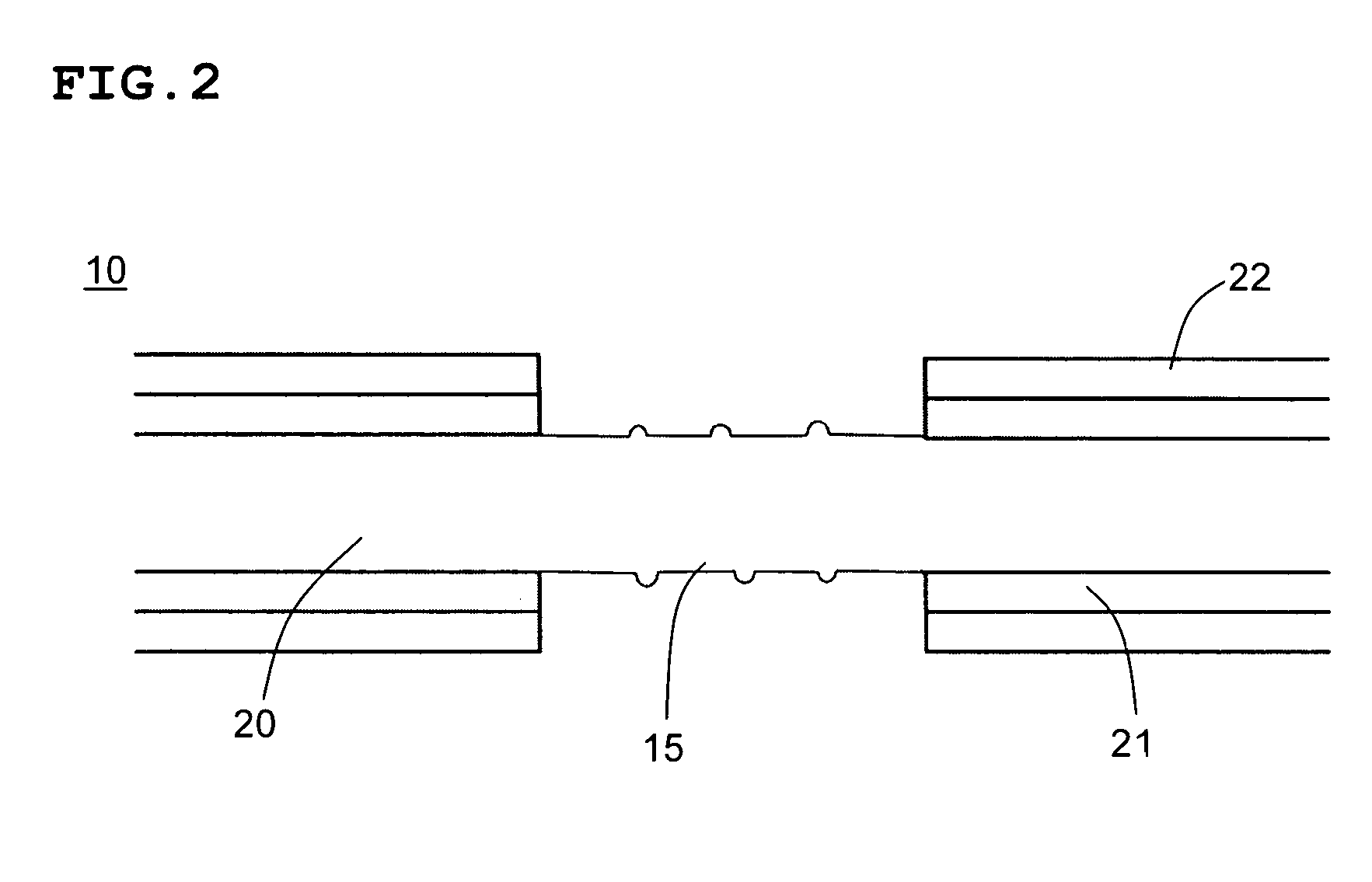Electrical contacts having solder stops
a technology of solder stops and electrical contacts, which is applied in the direction of sustainable manufacturing/processing, coupling device connection, and final product manufacturing, etc. it can solve the problems of reduced electrical performance of electrical connections between, reduced integrity of mechanical connections between electrical contacts and printed circuit boards, and reduced solder volume, so as to prevent solder wicking and prevent solder wicking. , the effect of preventing the wicking of solder
- Summary
- Abstract
- Description
- Claims
- Application Information
AI Technical Summary
Benefits of technology
Problems solved by technology
Method used
Image
Examples
Embodiment Construction
[0053]FIGS. 1A–1C illustrate a method of manufacturing, according to a first preferred embodiment of the present invention, an electrical contact 10 according to a second preferred embodiment of the present invention. FIG. 2 illustrates a close-up sectional view of an anti-wicking region 15 of the electrical contact 10.
[0054]FIG. 1A illustrates the electrical contact 10 having a contact body 11. The contact body 11 includes a contact tail 12 and a contact head 13. As shown in FIG. 1A, the contact tail 12 includes arms 16 for holding a fusible material, such as solder or a solder member (not shown). However, other arrangements for attaching solder to the contact tail 12 could also be used for attaching the fusible material in the form of, for example, solder balls or solder charges. Further, the contact tail 12 need not include any arrangement for holding solder. Instead, the fusible material or solder could be provided on any substrate to which the electrical contact 10 is to be sol...
PUM
 Login to View More
Login to View More Abstract
Description
Claims
Application Information
 Login to View More
Login to View More - R&D
- Intellectual Property
- Life Sciences
- Materials
- Tech Scout
- Unparalleled Data Quality
- Higher Quality Content
- 60% Fewer Hallucinations
Browse by: Latest US Patents, China's latest patents, Technical Efficacy Thesaurus, Application Domain, Technology Topic, Popular Technical Reports.
© 2025 PatSnap. All rights reserved.Legal|Privacy policy|Modern Slavery Act Transparency Statement|Sitemap|About US| Contact US: help@patsnap.com



